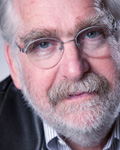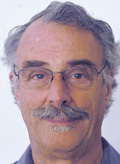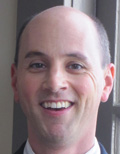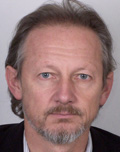Research centers offer disaster- themed preservation symposium

Robert Melnick

Randolph Langenbach

David Preziosi

Petr Justa

Donald Friedman

Dwayne Jones
Historic preservation efforts undertaken in the wake of natural and manmade disasters were the focus of “Disaster,” the 13th Annual [Historic Preservation Symposium] (http://archone.tamu.edu/chc/advocacy/Symposium2012.html) , which took place Feb. 24-25, 2012 at the Langford Architecture Center on the Texas A&M University campus.
In this year’s disaster-themed symposium two Texas A&M College of Architecture research centers, the [Center for Heritage Conservation] (http://archone.tamu.edu/chc/) and the [Hazard Reduction & Recovery Center] (http://archone.tamu.edu/hrrc/) , teamed up to present six experts from diverse backgrounds lecturing on a broad spectrum of topics related to disasters and cultural heritage.
“In 2011 the U.S. suffered the most disaster events in its recorded history, resulting in loss of life and $200 billion in damages,” said Robert Warden, CHC director. “These tragedies create societal problems in multiple areas — economic, cultural, healthcare, education, infrastructure and psychological — that can threaten cultural operation or identity. We’re concerned with understanding and exploring ways to mitigate loss through response to disasters when they occur and by preparing for disasters beforehand.”
The collaboration between the two research centers is important because disasters present unique difficulties to historic structures’ long-term recoveries, said Walt Peacock, director of the HRRC.
Such buildings, he said, face special difficulties after disasters. For example, when 50 percent of a residence, regardless of its age, is damaged after a disaster, it needs to be repaired to the latest building code, a standard that makes the recovery effort of historic buildings much more daunting.
“It can be a difficult but fascinating process,” he said.
Opening Address
The symposium began Feb. 24 in Preston Geren Auditorium with a welcome and introductions followed by the opening address, “Protecting Resources That Matter in a Future of Uncertainty,” presented by [Robert Z. Melnick] (http://aaa.uoregon.edu/node/233) , professor of landscape architecture and director of the [John Yeon Center for Architectural Studies] (http://aaa.uoregon.edu/yeon/cas) at the University of Oregon.
Melnick discussed the future of cultural resource protection in light of critical environmental and social developments, with special attention to unanticipated disasters. As an internationally recognized expert in cultural landscape evaluation and historic landscape preservation planning, he suggested reconsidering how critical cultural resources are identified. He focused on the need for stability and flexibility in approaches to preservation, identify lessons from other fields and propose future preservation strategies.
A Fellow of the American Society of Landscape Architects, Melnick received the 2008 James Marston Fitch Award for lifetime achievement in historic preservation education, one of the numerous awards his publications and professional projects have garnered.
He has published widely on issues relating to cultural landscapes and the preservation of many beloved national and scenic parks, prairies, battlefields, agricultural lands, historic campuses, and other significant open spaces. He served as lead consultant for such projects in Hawaii, California, Oregon, Iowa, Texas, Kentucky, Pennsylvania and New Jersey.
From 2005-2007, Melnick served as a senior program officer at the Getty Foundation in Los Angeles while on leave from the University of Oregon. There, he worked to fund the recovery of New Orleans museums and other public facilities damaged in the aftermath of Hurricane Katrina and spearheaded the Campus Heritage Initiative, which identified, evaluated and planned the protection of historic campuses.
Symposium Speakers
Saturday’s speaker lineup began Feb. 25 with “Traditional is Modern: Pre-modern, Earthquake-resistant Technologies that May Be Able to Teach Us How to Keep Modern Buildings From Collapsing,” a lecture by [Randolph Langenbach] (http://www.conservationtech.com/RL%27s%20resume&%20pub%27s/RL-resumes/1-Resume-home.html) , a Fellow at the American Academy in Rome.
Langenbach is an expert in earthquake-resistant retrofits for historic structures, conservation of masonry buildings, building code compliance issues, post-disaster damage assessment and repair, development of innovative strategies for cost-effective rehabilitation, and historic preservation documentation and photography.
He has served as a UNESCO consultant to the conservation of masonry buildings in earthquake areas in India, Yugoslavia, Greece and Central America, and published “Don’t Tear It Down! Preserving the Earthquake Resistant Vernacular Architecture of Kashmir” in 2009.
Next, David Preziosi, executive director of [Mississippi Heritage Trust] (http://www.mississippiheritage.com/) , presented “Preservation of Mississippi’s historic resources after Hurricane Katrina.” His lecture explored preservation efforts in the wake of the storm in partnership with other nonprofit organizations and state agencies, including the tools used, damage assessments, volunteer assistance, public relations, advocacy and a stabilization demonstration program.
[Petr Justa] (http://www.radio.cz/en/section/one-on-one/petr-justa-restorer-working-on-projects-from-new-orleans-to-mosul) , a lecturer at the Czech Republic’s University of Pardubice, presented “Disastrous Floods in Prague Historical Centre & Post War Conservation Projects in Iraq.” The lecture focused on the effects of 2002 flooding on Prague’s cultural heritage. High waters damaged museums and architecture in the city’s historic center, a UNESCO World Heritage Site. Justa highlighted rescue operations and conservation treatment in the wake of the flooding, presented other case studies and recommendations for flood protection and preventive conservation, and discussed his recovery and reconservation efforts in New Orleans after Katrina.
He also discussed his recent experience conserving Iraq’s architectural heritage, affected by war and seismic activity. His presentation noted how the country’s climate contributed to deterioration and preservation.
Donald Friedman, president of New York-based [Old Structures Engineering] (http://www.oldstructures.com/) and one of the leading consultants in structural engineering for historic and old buildings, presented “Disaster Response in Urban Heritage Environments.” His lecture addressed the conflict between heritage principles and emergency safety actions, exacerbated by modern city centers’ density and adjacent construction, and the obsolete structure of historic buildings, their fire-resistance and egress systems.
Other issues with heritage environments in urban areas that Friedman covered included pounding by adjacent structures during earthquakes, large-height debris impact, lack of access to rear and side facades, exposure to fire from adjacent structures, and the presence of significant below-grade utilities or cellars.
Dwayne Jones, executive director of the [Galveston Historical Foundation] (http://galvestonhistory.org/) , discussed the “Galveston Response to Hurricane Ike.” The GHF continues to steer its way through the hurricane’s multifaceted aftermath, which involves issues including remediation, U.S. Federal Emergency Management Agency and state emergency relations as well as long-term challenges of rebuilding an organization and community.
The GLF preserves and revitalizes historic buildings and maritime resources, such as the 1877 tall ship Elissa, the Galveston County Historical Museum, while providing assistance to homeowners, offering educational opportunities for children and adults, hosting an annual historic homes tour and Dickens on the Strand event.
A panel discussion and closing remarks concluded the symposium.
Previous post
Next Post
Tags
- arch gallery
- architecture
- archone gallery
- events
- feature
- hazard reduction & recovery
- heritage conservation
- interdisciplinary
- landscape architecture & urban planning
- laup gallery
- lectures
- partnerships
- planning
- research
- rss
- sustainability
Related Posts

Research, creative work presented at annual symposium

Oct. 23 symposium spotlighted college, faculty research

Oct. 29 symposium spotlights college, faculty research

Heritage symposium to focus on Alamo conservation efforts

A&M researchers collaborate in U.S. resilience center
Follow Us
Facebook Twitter Vimeo Youtube Flickr RSS
Recent Posts

Planning prof heads study of disaster housing aid

A message from the dean

Former student remembered as expert planner

Leading educator named new head of Architecture Dept.







_thumbnail_small.png)
